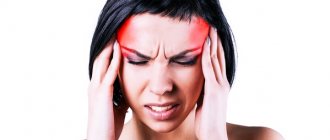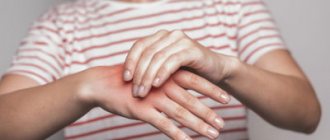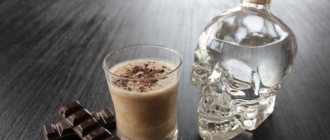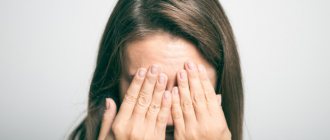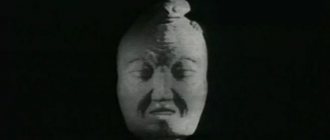“Sitting at a table near the cafe, I felt very strange. My body went numb, my fingers turned into claws, my lips wrinkled, and I completely stopped feeling my tongue. I felt like I was having a stroke at the age of 25. When the ambulance arrived, they loaded me into the car, and the muteness began to recede. I felt that I could speak again, but at the same time I felt trembling throughout my body, and my heart was beating at a speed of almost 200 beats per minute.”
This is how a young woman named Abi described her first panic attack. Her story ended well: Abi managed to overcome panic disorder and became a volunteer helping other people suffering from this illness.
Medical statistics show that about 5% of residents of large cities around the world live with panic attacks. However, there is no single pattern according to which panic disorder begins and develops.
In fact, it may not develop. It happens that a panic attack remains the first and last in a person’s life.
For others, panic attacks occur regularly, both for no reason or as a result of a developed phobia, for example, fear of public speaking. This happens to women more often than to men.
What is a panic attack?
Loss of control and fear of death: what a person feels during an attack
First of all, this is a feeling of loss of control over the situation, a feeling of doom and fear of death. A person may feel like they are losing consciousness or that they are having a stroke or heart attack.
A panic attack is usually accompanied by some or all of the following physical symptoms:
increased heart rate;
feeling of weakness in the limbs (“woolly legs”) or the whole body;
dizziness or headache;
a rush of heat or cold;
nausea;
chest or stomach pain;
severe shortness of breath.
All this may also be accompanied by a feeling of unreality of what is happening, loss of contact with the outside world.
A panic attack usually lasts from 5 to 20 minutes. With a long attack, the symptoms reach their peak at the tenth minute.
It also happens that the symptoms begin to weaken, after which a second wave begins, and they again reach their peak.
And in people with an anxiety disorder, the same symptoms may appear slightly milder, but over a longer period of time.
Anxiety disorders
This is a group of mental disorders characterized by severe causeless anxiety or fear. There are several types of anxiety disorders: generalized anxiety disorder; specific phobias; social anxiety disorder. Despite the existence of effective treatments, many sufferers of anxiety disorders do not receive adequate diagnosis or help, and the disorder becomes chronic, with a significant impact on quality of life.
If panic attacks occur in response to specific stimuli (for example, when being in a crowd of people), then this is evidence of a phobia. The origin of phobias is still unknown; people can be afraid of the most unexpected things.
If attacks occur in the absence of a trigger, if no logic can be traced in their onset, then the person is diagnosed with “panic disorder.”
The effect of negative emotions on the heart
The term "emotion" comes from the Latin emovere, which means "to excite, excite." Emotions are known to cause excitement and increased activity of a huge number of brain structures, like a storm, involving many organs and systems in intense activity. This storm sometimes mercilessly falls primarily on the cardiovascular system of the body, causing many diseases.
Scientists have found that negative emotions such as anger, anger and rage can be deadly for people who already have heart disease.
Classification of emotions
There are different classifications of emotions, but we are now interested in emotions from the point of view of their influence on the heart, so we will divide all emotions into three groups:
- positive;
- negative sthenic;
- negative asthenic.
Negative emotions are divided into:
- sthenic (this is anger, indignation, rage); arise and occur with an increase in energy activity, they mobilize the body's resources, stimulate the activity of the muscles, nervous and cardiovascular systems.
- asthenic (melancholy, fear, horror); occur against the background of suppression of the body’s energy and intellectual potential, suppression of mental activity, muscle activity, inhibition of any response of the body.
Thenic and asthenic emotions affect the heart differently. For example, if with melancholy and fear the blood flow in the vessels of the heart worsens, then with anger and rage, on the contrary, it increases.
Researcher in the field of experimental cardiology G.I. Kositsky considers sthenic and asthenic emotions to be manifestations of one single process that arises in response to changing environmental conditions, which he calls a state of tension (ST).
State of tension
There are four stages of heart failure:
- The stage of mobilization of the body's reserves (in response to some situation) - stimulation of the nervous, endocrine and cardiovascular systems, increased brain activity, increased muscle tone and strength, and the level of energy metabolism. This is often accompanied by an increase in mental performance and mood, the mechanisms of probabilistic thinking are activated, a state of inspiration, insight, and high creative activity arises.
- Stenic negative emotions (if our body “believes” that the situation is critical and will require a large expenditure of strength and energy) is an extreme strengthening of all systems responsible for interaction with the external environment. Muscle tone, strength, and endurance increase sharply. All energy processes are sharply mobilized. The activity of the heart increases, blood pressure, ventilation of the lungs, and the release of adrenaline increase. Immunological reactions intensify, etc. But, unlike the first stage, the mobilization of resources does not occur selectively (economically, expediently), but violently, excessively, redundantly and not always adequate to the situation.
- Asthenic negative emotions (if the body “believes” that the situation is emergency and the resources at its disposal are obviously insufficient for an adequate response and therefore the mobilization of these resources is practically useless) - all types of performance sharply decrease, severe fatigue and inhibition of the cerebral cortex occur. Immunological reactions are inhibited, cell restoration processes are inhibited, memory loss is noted, and the ability to think, make decisions, and assess the situation is suppressed.
- Neurosis is the last stage of HF, when the balance of processes in the cerebral cortex is disturbed, then the “vegetative storm” (i.e., that complex of manifestations of the restructuring of the body that was described above), characteristic of the third stage, turns into “chaos” (if in Only strictly defined organs and systems that are part of the “program” of restructuring the body are subject to “storm” excitation (or oppression), then in “chaos” there is not even the semblance of a system or program). There is a sharp loss of performance, behavioral reactions and regulation of internal organs are disrupted, and cardiovascular diseases develop.
Methods of dealing with the consequences of negative emotions
The stage of mobilization of the body's reserves does not require correction, since negative consequences do not accumulate. Moreover, this stage is a training stage, stimulating adaptation processes, subject to more or less periodic occurrence.
With sthenic negative emotions, the only physiologically justified way to discharge is physical activity - fast walking, running, etc. In this case, muscle work leads to vasodilation and a decrease in total blood pressure, and increased oxidative processes contribute to the accelerated destruction of adrenaline, muscle fatigue stimulates the occurrence of inhibition processes in the central nervous system.
True, you can’t lose your head - the load must be adequate to the condition and fitness of the body. Just imagine what will happen if an unprepared person in a state of passion runs on foot to the 9th floor.
It should be noted, in addition, that shouting, swearing, “taking out evil” cannot be justified not only from a moral and ethical standpoint, but also from a medical one, since this does not lead to a complete release of tension, and if after this there remains a feeling of dissatisfaction with one’s own lack of restraint, feelings of guilt, then the accumulation of negative emotions only intensifies, and resistance to stress loads decreases. You can use soothing herbs - valerian, motherwort.
Prevention of stage 2 heart failure consists of normalizing the balance of inhibition and excitation processes in the nervous system. A person who knows this peculiarity of his response to stress should regularly receive a sufficient amount of B vitamins; during and before possible stressful situations (exams, for example), small amounts of sedatives, both natural and, according to indications, synthetic origin, can be taken. full, sufficient sleep and physical activity (even short-term and low-intensity exercise is allowed, but always in the fresh air).
With asthenic negative emotions, first of all, it is necessary to raise the tone of the body and, above all, the nervous system to a relatively normal level. In this case, physical activity no longer causes relaxation or relieves tension.
A person needs drugs that stimulate metabolism in the body and nervous system. Preparations containing phospholipids, which are involved in the metabolism of nerve cells, often help well. Multivitamin preparations with antioxidant properties are necessary.
Extended sleep is indicated. In this case, the use of valerian and motherwort is less justified than hawthorn or peony, since the latter drugs, having a mild sedative effect, do not enhance inhibition processes in the brain. And, of course, professional help from a psychologist or psychotherapist is needed.
With neurosis, a person needs to seek qualified help from a doctor.
Based on materials from profilaktika.tomsk.ru
Fight or flight from scratch
Photo: cottonbro/Pexels
What causes panic attacks?
There is research suggesting that there is a genetic predisposition to panic disorder, especially in women.
There is also a connection between panic disorder and high sensitivity to a variety of physical stimuli (sunlight, smells, weather changes), but to date there is not enough data to definitively say that such sensitivity is the cause of the disease.
It is unclear whether there is any feedback here. It is possible that it is panic disorder that aggravates the patient’s sensory perception.
The cause of the disorder may be serious psychological trauma or prolonged stress.
Scientists believe that during a panic attack, the human body enters a “fight or flight” state, which is quite natural in the face of real danger. If you encounter a bear in the forest, your body instinctively speeds up your breathing and heart rate, preparing to flee or physically fight back. During a panic attack, the same thing happens, but without a real stimulus.
What to do?
Panic attacks themselves are not dangerous, but if nothing is done about them, they can get worse.
Panic disorder significantly reduces a person’s quality of life: it interferes with the performance of professional duties, visiting public places, traveling in public and even private transport (a person may be afraid of a panic attack and loss of control over the car).
If a panic attack occurs for the first time, you should visit a doctor, despite the fact that it may not happen again. As already mentioned, panic attacks in their symptoms resemble a heart attack, and therefore, first of all, it is necessary to find out what the patient is dealing with.
If the doctor does not find cardiovascular pathologies, then it is necessary to draw up a treatment plan for panic disorder and strictly adhere to it.
As a rule, the patient is recommended what is now commonly called a healthy lifestyle, and first of all, physical activity.
This can reduce the number of panic attacks, making them much more rare, but in a large number of cases it does not completely solve the problem.
Panic disorder is a type of anxiety disorder that, in addition to external causes, is associated with an imbalance of neurotransmitters (signaling molecules) in the brain, which cannot be easily corrected through lifestyle changes alone.
It is often necessary to resort to drug treatment. Benzodiazepine drugs are approved for the treatment of panic disorder, the best known of which is Xanax.
The drug is not ideal: addiction develops to it, and over time it stops working, and therefore it should be taken strictly in accordance with the doctor’s instructions. It is often recommended to limit its use only to cases of urgent need - only during a panic attack.
How else can you ease the attack?
Photo: Ivan Samkov/Pexels
There are a number of techniques to help cope with a panic attack.
First of all, you need to admit that you are having a panic attack, and not a stroke or heart attack, tell yourself that your life is not in danger and that this condition will gradually pass.
Some experts and experienced patients with this disorder recommend repeating a prepared phrase to yourself, for example, “Everything passes, and this will pass.”
In this case, you need to focus on breathing. A person can control this physiological process. Experts recommend inhaling air through your mouth, counting to four, holding your breath for a second, feeling how your chest is filled with air, and then exhaling just as slowly for four counts.
What follows is mutually exclusive advice, since different techniques help different people.
The first line of action is to close yourself off from external stimuli. It is recommended to close your eyes and relax your body muscles. It is advisable to master the muscle relaxation technique in advance so that it can be used effectively during an attack.
Another line of behavior is to use a technique called “grounding,” which can be translated into Russian as “grounding.” It is especially effective for those who, during a panic attack, experience a feeling of losing contact with reality.
To restore this contact and control over the situation, it is recommended to do something opposite to what was suggested above, namely:
listen to sounds;
take off your shoes and stamp your bare feet, feeling the structure of the surface underneath them;
touch the fabric of your clothes, the surface of the table, the objects you have in your bag with your hands, and realize the difference in sensations from smooth surfaces and soft or fluffy objects.
wrap yourself in a blanket, hug a plush toy and record the feeling of this action.
smell something odorous.
Experts and people who have experienced panic disorder recommend carrying around a helpful box with small objects that can trigger a variety of sensory sensations. These can be smooth and rough pebbles, small bottles of perfume or essential oils, pieces of fabrics of different textures.
Fear not only kills the mind... it is quite capable of killing the body too. Death by fright may seem like a myth, but it really happens to people—and animals. The authors of Zoobiquity: What Animals Can Teach Us About the Health And Science of Healing examine this issue in detail. So what really happens to those who are scared to death? The number of heart attacks increases during earthquakes, financial disasters and civil unrest. They also often happen during extra time at football matches... and while watching horror films. They occur in people and animals, and not physically injured ones. Our bodies are designed in such a way that we can literally be scared to death. Mechanism There are several ways fear and stress can stretch, tear, or break a heart. The heart is a collection of chambers surrounded by muscles that support and compress them, forcing blood through them. There is a well-known syndrome that disrupts the balance between the chambers and muscles. Japanese doctors have noticed that relatively young and healthy people who are under constant stress, pain or fear may develop symptoms of a heart attack. Having looked closely at the heart of one of the patients, they saw that one of its chambers was noticeably swollen. Someone in their place might have thought it looked like an eggplant or a light bulb, but they saw it as a takotsubo - an octopus trap used by Japanese fishermen - and called the syndrome "takotsubo cardiomyopathy." The nervous system controls the rhythm of contractions of the heart muscle. Stress hormones - catecholamines - are, in principle, supposed to increase the capabilities of muscles, causing them to work harder and faster than usual, and to respond better to nerve impulses. Sudden shocks—whether simple fear or deep emotional stress—cause a release of hormones that disrupt the heart rhythm, increase tension on certain parts of the arteries and muscles, or completely poison the muscles. Most patients with Takotsubo syndrome recover. In some cases, however, the normal heart rhythm was so disrupted that people died. Sometimes the ventricle literally burst. This circumstance, combined with the emotional background of the disease, led to Takotsubo cardiomyopathy being called “Broken Heart Syndrome.” However, stress and trauma don't just kill the heart. Catecholamines burn all the muscles in the body. They cause muscles to literally burn and break down. This is especially true for skeletal muscles—the muscles associated with the skeletal system. When these muscles are destroyed, proteins from them enter the blood, and from it into the kidneys. The kidneys eventually cannot stand it and fail, the body is poisoned and death follows. This process is called, not so poetically, rhabdomyolysis. Sometimes it happens unexpectedly, but more often - as a result of a long chase, with constant muscle tension and emotional exhaustion. Deaths Deaths from takutsobu syndrome come as no surprise to one segment of the medical world: veterinarians, who have been dealing with the deaths of freshly caught animals since their profession began. This phenomenon is called catch myopathy. The mortality rate among captured wild animals ranges from 1% to 10%. For some species, including most birds, it can be up to 50%. Since the focus shifted from hunting to conservation, techniques have been developed to reduce mortality. These include limiting mobility as little as possible, not following the animal, minimizing noise and traffic, and allowing the animal some space to move. It is also believed that one should not look directly into the eyes of a captured animal for a long time. If animals do not die upon capture, these factors help reduce mortality. They also help reduce mortality in captivity. Zoos know that animals need a lot of space, they need places to hide from visitors, and that noise must be reduced at all costs. There is a known case where an opera performance in a nearby park scared an okapi to death. Another zoo learned that some animals are better off not being kept together when several zebras died while they were housed in the same enclosure as an African buffalo. People die unexpectedly in the same way as animals frightened by a loud noise or carelessly caught - although usually under different circumstances. Strong shocks sometimes kill seemingly healthy people. The curse of humanity is that our emotions make us feel in some situations like a zebra caught in an enclosure with a large and dangerous animal. Financial collapse, the death of a loved one, the inability to get rid of a phobia causing factor, bullying at school or at work cause the same physical reaction that occurs in animals when their life is threatened and there is no hope of escape from it. People who feel trapped are at risk of the same “capture myopathy” as trapped animals. The body releases the same cocktail of chemicals. It gives energy to muscles in the short term, but in the long term or when overloaded, it simply destroys them. The stress continues without respite, and the body seems to fail. A person can literally be scared to death. The connection between these two diseases was first traced by Barbara Natterson-Horowitz, a surgeon who worked with both humans and zoo animals. Both experienced the same physical injuries stemming from the same emotional sources. It seems that animals and I have more in common in our emotional and physical responses than we think. For more information on this and other health issues common to humans and animals, see Barbara Natterson-Horowitz and Kathryn Bowers' book Zoobiquitousness: What Animals Can Teach Us About Health and the Science of Healing.
InoSMI materials contain assessments exclusively of foreign media and do not reflect the position of the InoSMI editorial staff.
